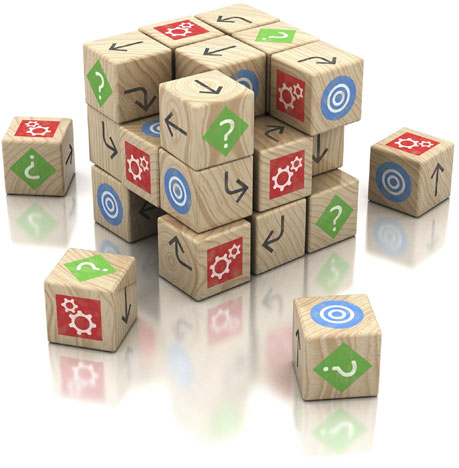Adaptability: The new competitive advantage
 You make strategies to create and build competitive advantages and
the approach to strategy assume a relatively stable world and static
landscape. You make strategies to create and build competitive advantages and
the approach to strategy assume a relatively stable world and static
landscape.
With pain and sweat, you build an enduring competitive advantage by
achieving scale, creating an attractive niche, or exploiting specific
abilities and resources as a business. But globalization, new
technologies, and greater connectivity and transparency have combined to
upend the business environment. Sustainable competitive advantage no
longer arises from brand positioning or the strength of resources.
Instead, it stems from organizational abilities that foster rapid
adaptation:
Challenge
The ability to read and act on signs of change, experimenting rapidly
and frequently to maintain the position. We live in an era of
uncertainty, instability and high risk demanding frequent adaptation to
stay ahead of the curve. Your business plan is a living document that
evolves with time, to ensure your venture adapts and keeps pace with the
dynamic marketplace. For some businesses, it has become virtually
impossible even to clearly identify in what industry and with which
companies they are competing.
This uncertainty poses a tremendous challenge for strategy making.
That's because traditional approaches to strategy - though often seen as
the answer to change and uncertainty -actually assume a relatively
stable and predictable world - I'm sure you have hands-on experience on
this.
The goal of most strategies is to build an enduring long-lasting
competitive advantage to deliver the best offering, doing what the
company does well and better than the competition.
Managers undertake periodic strategy reviews and set direction on the
basis of an analysis of their industry and some assumptions on how it
will evolve. But given the new level of uncertainty, many companies are
beginning to ask: When change is so rapid, how can a one-year - or,
worse, a five-year - planning cycle stay relevant?
Sustainable competitive advantage no longer arises exclusively from
position, scale, and first-order abilities in producing or delivering an
offering. All those are essentially static. Where does it come from? It
stems from the 'second-order' organizational abilities that foster rapid
adaptation. Instead of being really good at doing a particular thing,
companies must be really good at learning how to do new things.
Turbulent environment
Those that thrive are quick to read and act on signs of change. They
have worked out how to experiment rapidly, frequently, and economically
- not only with products and services but also with business models,
processes, and strategies. They have learned to unlock their greatest
resource - the people who work for them. Ability to read and act fast on
signals is critical. In order to adapt, a company must have its antennae
tuned to signals of change from the external environment, decode them,
and quickly act to refine or reinvent its business model and even
reshape the information landscape of its industry.
|

WWW.ADAMALTHUS.COM |
In this information-saturated age, when complex, varying signals may
be available simultaneously to all players, adaptive companies must
similarly rely on sophisticated point-of-sale systems to ensure that
they acquire the right information. And they must apply advanced
data-mining technology to recognize relevant patterns in it.
In addition to changing the way in which they conduct experiments,
companies need to broaden the scope of their experimentation.
Traditionally, the focus has been on a company's offerings - essentially
new products and services.
But in an increasingly turbulent environment, business models,
strategies, and structures can also become obsolete quickly. Adaptive
companies are very tolerant of failure and becoming an adaptive
competitor can be difficult, especially for large, established
organizations.
Typically, these companies are oriented towards managing scale and
efficiency, and their hierarchical structures and fixed routines lack
the diversity and flexibility needed for rapid learning and change. Such
management paradigms die hard, especially when they have historically
been the basis for success.
The speed of adaptation is a function of the cycle time of
decision-making. In a fast-moving environment, companies need to
accelerate change by making annual planning processes lighter and more
frequent and sometimes by making episodic processes continual.
The adaptive approach is no universal panacea. But if your
competitive reality is uncertain and rapidly changing, as is true in an
increasing number of industries, you need a dynamic and sustainable way
to stay ahead. Your survival may depend on building an organization that
can exploit adaptive advantage.
Adaptability is not merely a 'nice to have competency'. It is a
competitive advantage for you, as an employee, leader and for your
organization - think, be convinced and make a call today to build that
organization.
|

